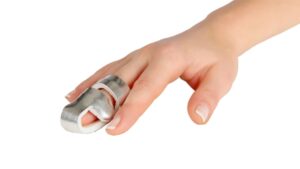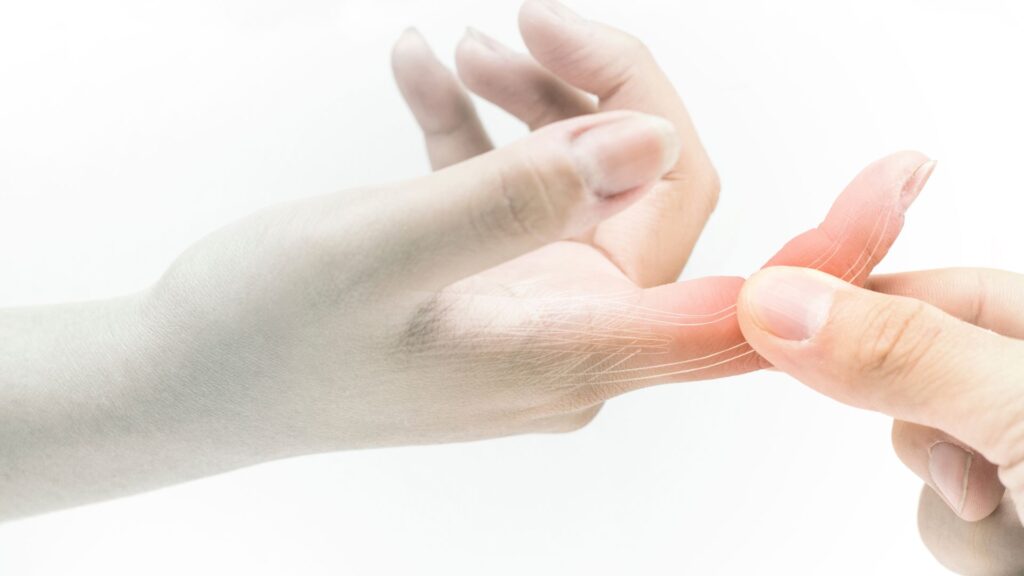About
Finger fractures are a common type of injury that can happen to anyone, from athletes like James to office workers. In this comprehensive guide, we’ll delve into the anatomy of the finger, the mechanism of injury, types of fractures, symptoms and signs, examination and x-ray, management, and complications. We’ll also provide a step-by-step guide on how Urgent Care Brisbane can help patients with finger fractures without going to the hospital emergency.
Anatomy of the Finger
The finger consists of small bones called phalanges, which are connected by joints. Each finger has three phalanges, except for the thumb, which has two. The bones are held together by ligaments, and muscles and tendons enable finger movement.
Mechanism of Injury
A finger fracture occurs when a fast-moving object, such as a ball or another person, impacts the finger. This force can cause the finger bone to break or become dislocated. It can also result from an attempt to break a fall or from a minor injury, like accidentally hitting your finger against a hard surface.
Types of Fractures
There are several types of fractures, including:
- Simple fractures: The bone breaks but does not puncture the skin.
- Compound fractures: The bone breaks and pierces the skin.
- Avulsion fractures: A small piece of bone is torn away by the force of the injury.
- Comminuted fractures: The bone shatters into multiple pieces.
- Greenstick fractures: The bone bends and cracks, but does not break completely.
The type of fracture and its severity will determine the treatment required and whether the patient will require surgery.
Diagnosis
Symptoms and Signs of a Fracture
If you suspect a finger fracture, look for the following symptoms:
- Pain at the fracture site
- Swelling and bruising
- Deformity, such as a bent or twisted finger
- Difficulty moving the finger or a limited range of motion
- Numbness or tingling
Examination and X-ray
An x-ray is essential to confirm a finger fracture and determine its type. A healthcare professional will examine the injured finger and may ask you to move your finger to assess the range of motion and any joint instability. They may also check for any nerve or blood vessel damage.
Treatment
Management of Finger Fractures

The management of a finger fracture depends on the type and severity of the injury. Treatment options include:
- Immobilization: A splint or cast may be used to keep the finger stable and allow the fracture to heal.
- Reduction: If the bone is displaced, a doctor may need to realign the bone fragments. This can be done manually (closed reduction) or through surgery (open reduction).
- Surgery: In some cases, such as comminuted or compound fractures, surgery may be required to fix the broken bone with pins, screws, or plates.
- Pain management: Over-the-counter pain relievers and ice packs can help reduce swelling and alleviate pain.
Complications
If not treated properly, finger fractures can lead to long-term complications, such as chronic pain stiffness, or arthritis. In rare cases, an infection may develop at the fracture site, which can be life-threatening if not addressed promptly.
How We Can Help
For patients like James, who have suffered a finger fracture, Urgent Care Brisbane offers a convenient and efficient alternative to the hospital emergency room. Here’s a step-by-step guide on how Urgent Care Brisbane can help manage finger fractures:
- On-site radiology: Urgent Care Brisbane has x-ray facilities on-site, allowing for quick and accurate diagnosis of the fracture.
- Closed reduction: If the fracture requires realignment, the skilled medical staff can perform a closed reduction, avoiding the need for surgery in many cases.
- Casting: Urgent Care Brisbane offers both synthetic and traditional casting options to stabilize and protect the injured finger.
- Follow-up care: Patients can schedule follow-up appointments at Urgent Care Brisbane to monitor their progress and ensure proper healing.
By seeking prompt and appropriate treatment at Urgent Care Brisbane, patients with finger fractures can avoid long-term complications and return to their normal activities sooner.
Next Steps
Visit Urgent Care Brisbane for Expert Care and Treatment
Finger fractures, while common, should not be taken lightly. Early detection and proper treatment are crucial to ensuring a full recovery and preventing long-term complications. By understanding the anatomy, types of fractures, and symptoms, you’ll be better equipped to recognize a finger fracture and seek appropriate care. And with facilities like Urgent Care Brisbane, patients have access to efficient, high-quality treatment without the long waits and high costs associated with hospital emergency rooms.
So, the next time you find yourself in a situation like James, remember that a broken finger is not just a minor injury. Seek professional help, follow the recommended treatment plan, and give your finger the care it deserves. With the right approach, you’ll be back in the game in no time.

